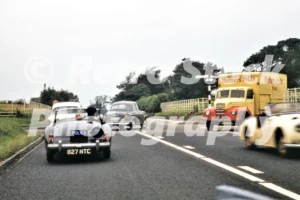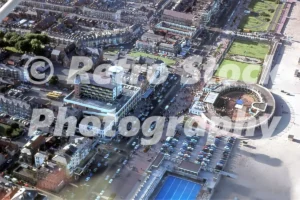The Leyland Titan PD2 was one of the most iconic double-decker buses of post-war Britain. Introduced in 1947 as a successor to the earlier PD1, the PD2 quickly became a familiar sight on streets across the UK, serving towns and cities from Edinburgh to the south coast. Built by Leyland Motors, the PD2 combined reliability, practicality, and robust engineering that made it a favourite among municipal and independent bus operators alike.
The PD2 was powered by a Leyland 0.600 diesel engine and typically fitted with a synchromesh or pre-selector gearbox, making it easier to drive than the crash gearboxes of earlier buses. The bus came in different lengths—most commonly 26 or 27 feet—and could be specified with various body styles and layouts depending on the needs of the operator. Some versions had open platforms at the rear, while others featured fully enclosed entrances and sliding doors.
A number of prominent operators ran large fleets of PD2s. Southdown Motor Services acquired around 80 of them in the late 1940s, while Lothian Region Transport in Edinburgh used PD2s extensively as they replaced the city’s ageing trams. Other fleets, such as Midland “Red,” also turned to the PD2 to meet post-war passenger demand.
Several subtypes were produced over the years, including the PD2/10, PD2/12, and PD2/24. Differences between these variants often related to braking systems (vacuum vs. air brakes), body widths, and entrance layouts. The PD2/12, for example, was a wide-bodied version favoured by Southdown, with rear entrances and sliding doors.
Production of the PD2 ended in the late 1960s as bus design moved toward rear-engine layouts and one-person operation. It was succeeded by newer models like the Leyland Atlantean and, later, the B15 Titan. Yet many PD2s remained in service well into the 1970s, a testament to their durable design.







Reviews
There are no reviews yet.